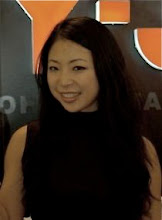 Since we have the Web, people have become lazier. People spend increasing number of hours ordering things online, searching for things online, and meeting friends online. Now the Web is using a technology called sentiment analysis to tell us how the Web feels.
Since we have the Web, people have become lazier. People spend increasing number of hours ordering things online, searching for things online, and meeting friends online. Now the Web is using a technology called sentiment analysis to tell us how the Web feels.What it does is it gathers the feedback from people and let you know what the mass thinks of a piece of news item, a restaurant, a dish, etc. For example, if you search for a restaurant when you are out with friends, it doesn't just tell you the list of restaurants nearby and what types of food they serve, it also tells you what the overall sentiment people have about this restaurant.
So the Web has become smart enough to decides for us.
Another Web site that uses this technology is Newstin.com, a news aggregator that measures the sentiment for each piece of news it has on the site. When a news article shows up on the site, it also shows a vertical bar that colors either green or red, with green meaning positive sentiment and red meaning negative.
For instance, if you search for Obama on Newstin, thousands of news items will show up in the search result, each with a different color bar beside it. With a quick glance, readers can get a rough idea of whether the majority of the news about Obama recently is complimentary or derogatory.
One sentiment analysis provider in San Francisco Scout Lab said the technology has become advanced enough for it to not just decoding numbers, but also decoding feelings on the Web.














